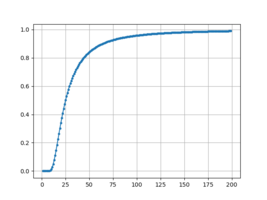statsnovice
New member
- Joined
- Mar 24, 2023
- Messages
- 4
If I have two metrics, - number of reviews and the rating out of 5, and I want to combine them into a single meaningful rating that can rank a list, how can I do that?
For example, let's say I have the following:
BeachName-#Reviews-Rating
Pantai Kaneko Beach-10-4.9 (meaning 10 reviews with a mean rating of 4.9)
Pantai Kelating Beach-517-4.4
Pantai Pusat Beach-913-4.5
Pantai Abian Kepas Beach-156-4.4
Pantai Antap Beach-177-4.6
Pantai Manyar Beach-141-4.3
Pantai Pernama Beach-840-4.3
Pantai Saba Beach-102-4.4
Pantai Masceti Beach-1155-4.4
Pantai Cucukan Beach-1-4
Emerald Dive Spot-2-5
USAT Liberty Shipwreck-896-4.7
Pantai Nusantara Beach-62-4.1
Menjangan Island-137-4.6
I don't have more than grade 5 math.
What Excel formula could I use to combine these two numbers to rank this list by popularity.
I want to do more than say this beach has the most reviews....I would like to adjust that by the review out of five to try and get a better ranking.
For example, let's say I have the following:
BeachName-#Reviews-Rating
Pantai Kaneko Beach-10-4.9 (meaning 10 reviews with a mean rating of 4.9)
Pantai Kelating Beach-517-4.4
Pantai Pusat Beach-913-4.5
Pantai Abian Kepas Beach-156-4.4
Pantai Antap Beach-177-4.6
Pantai Manyar Beach-141-4.3
Pantai Pernama Beach-840-4.3
Pantai Saba Beach-102-4.4
Pantai Masceti Beach-1155-4.4
Pantai Cucukan Beach-1-4
Emerald Dive Spot-2-5
USAT Liberty Shipwreck-896-4.7
Pantai Nusantara Beach-62-4.1
Menjangan Island-137-4.6
I don't have more than grade 5 math.
What Excel formula could I use to combine these two numbers to rank this list by popularity.
I want to do more than say this beach has the most reviews....I would like to adjust that by the review out of five to try and get a better ranking.

